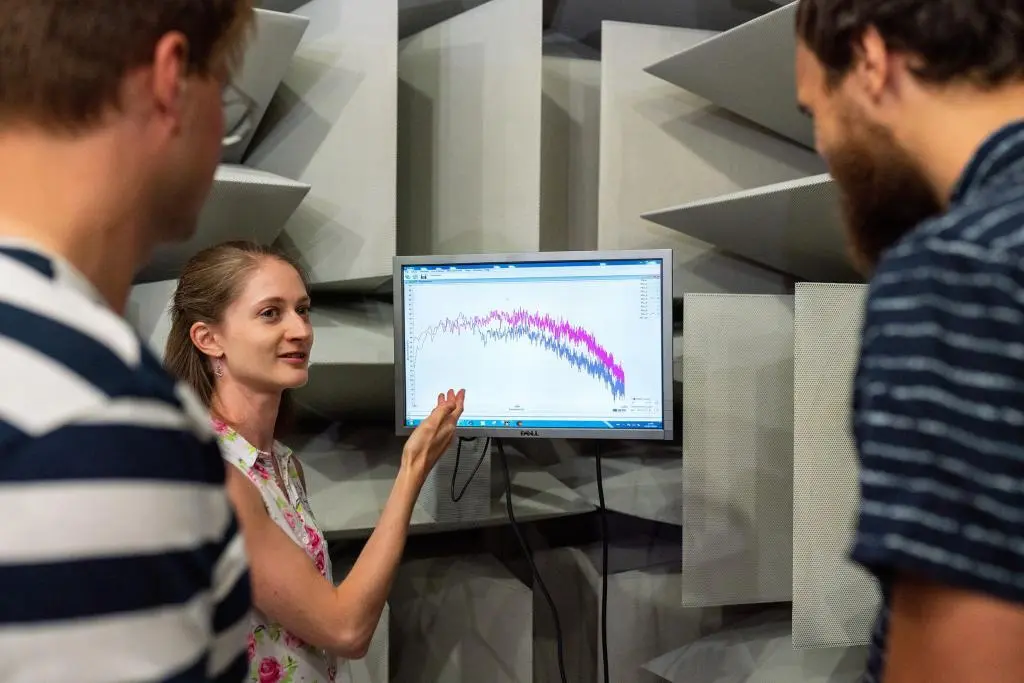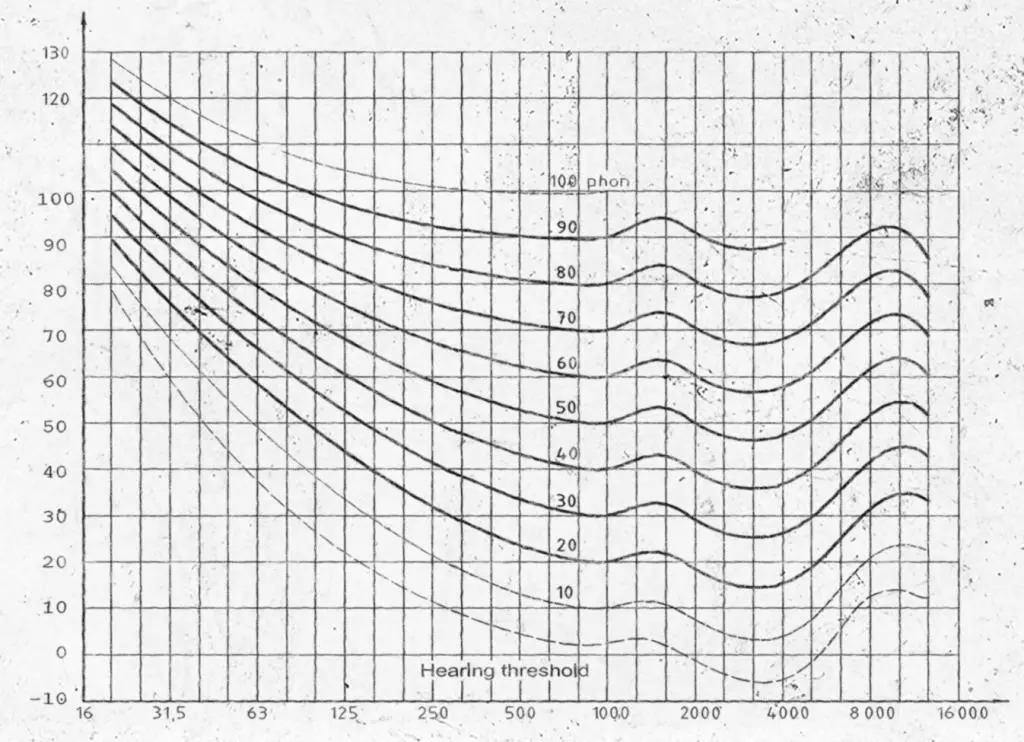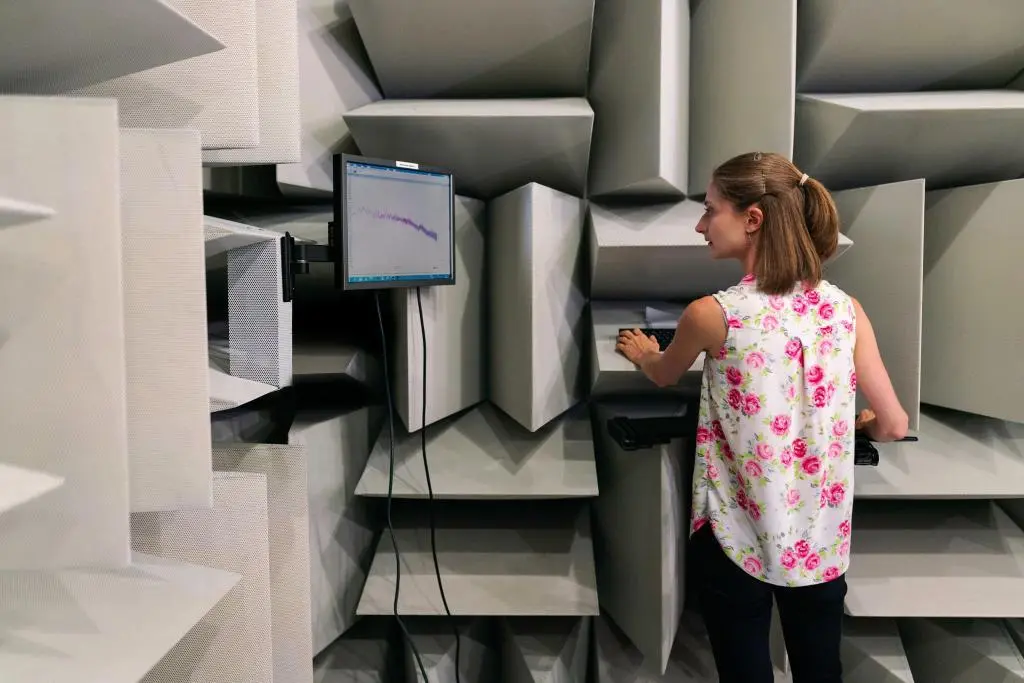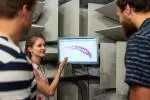Attenuation can be define to that gradual loss of intensity, the reduction of amplitude or superficially put, volume. In fact, attenuation means to reduce or just make quieter.

What is Attenuation: Table of Contents
When diving into the world of sound, one must swim through an ocean of technical terms and concepts. Among these, ‘attenuation’ stands out as a key player, holding a significant role in the field of audio and music production.
But what exactly is attenuation, and why should anyone involved in the world of sound production care about it?
In its simplest form, attenuation refers to a decrease or loss in power or intensity of a signal or wave. Think of it as the gradual fading out of your favorite song as you move further away from the speaker, or how a strong beam of light becomes dimmer as it passes through a foggy atmosphere. This fundamental concept can be applied to many forms of energy, including sound waves, which makes it a crucial topic in the realm of audio engineering.
In audio production, attenuation is all about controlling the strength of an audio signal. Whether you’re a sound engineer adjusting the levels on a mixing desk, a musician playing around with the volume knobs on an amplifier, or a music producer meticulously balancing the elements in a mix, you’re essentially manipulating attenuation.
Understanding attenuation is of great importance for anyone involved in the intricate process of creating, recording, mixing, or simply playing back music. This is because sound, in its raw form, can be incredibly varied in terms of volume, intensity, and frequency. Imagine recording a drum kit and a violin in the same room. The loud, powerful sound of the drums could easily overwhelm the delicate notes of the violin, rendering them nearly inaudible in the mix.
This is where the concept of attenuation comes into play. By intentionally reducing the volume of certain sound sources, or attenuating them, we can ensure all elements of our mix can be heard clearly, without one overpowering another. This practice allows us to maintain a balanced, harmonious blend of sounds – the key to a high-quality audio production.

What Does ‘Attenuation’ Mean?
At its core, ‘attenuation’ is derived from the Latin verb ‘attenuare’, which means ‘to thin or weaken’. In the context of sound and audio, attenuation refers to the reduction in the intensity, power, or magnitude of a sound signal. It is a decrease in the level of sound energy as the sound wave travels through a medium, whether it be air, water, or a solid material. The distance the sound wave travels, the properties of the medium it travels through, and the frequency of the sound wave all affect the amount of attenuation.
The term ‘attenuated’ serves as the past tense and past participle of the verb ‘attenuate’, indicating that a sound signal has been reduced in intensity. For instance, when we say a sound has been ‘attenuated’, we are communicating that its strength or volume has been deliberately decreased.
On the other hand, ‘attenuation define’ refers to the process of defining or specifying the degree of attenuation. In audio engineering, it might involve adjusting a control on a mixing console or tweaking a parameter in a digital audio workstation to set the precise amount of attenuation required.
How Does Attenuation Affect Sound?
Now that we understand the basic definition of attenuation, let’s delve into how this concept applies to sound specifically, often referred to as ‘attenuation of sound’.
Sound wave attenuation is the phenomenon of sound energy reduction as the wave propagates through a medium. It occurs due to various factors including the absorption of sound energy by the medium, scattering and diffraction of the sound waves, and the distance the sound waves travel. The outcome is a decrease in the loudness or intensity of the sound as it moves away from its source.
Consider a simple example: when someone is talking at a certain distance from you, their voice seems loud and clear. However, as they walk further away while continuing to talk, their voice becomes gradually quieter until it’s barely audible. This is sound wave attenuation in action.
In the context of audio and music production, attenuation plays a crucial role in shaping the sound output. The quality of audio is significantly impacted by how effectively sound engineers and music producers manage attenuation. For instance, in a multi-track recording, attenuation is used to balance the levels of different tracks, ensuring that no single sound source overpowers others. By precisely adjusting the attenuation, professionals can create a cohesive, harmonious mix where every sound element is heard clearly.
Understanding and effectively controlling sound wave attenuation is thus vital to achieving high-quality sound in music and audio production. It helps engineers and producers to manipulate sound with precision, allowing them to shape the auditory experience to their liking.
Decoding the Attenuation Coefficient
The ‘attenuation coefficient’ is a paramount term in acoustics. It’s a measure that quantifies the rate at which sound energy is reduced as it travels through a medium. Essentially, it measures how quickly a sound wave loses its energy in a specific material or medium. It’s expressed in decibels per meter (dB/m), and higher values indicate greater loss of sound energy as the wave propagates.
Imagine throwing a stone into a calm lake. The resulting ripples spread outward from the point of impact, but their strength gradually decreases, or attenuates, the further they move away from the center. In a similar way, the attenuation coefficient describes how rapidly the energy of a sound wave decreases as it propagates through a medium.
This coefficient depends on several factors, including the properties of the medium (like density and elasticity), the frequency of the sound wave, and environmental conditions such as temperature and humidity. For example, high-frequency sounds attenuate more quickly than low-frequency sounds, which is why you can hear the bass beats of music from a distant concert but not the higher-pitched melodies.
The accurate measurement and understanding of the attenuation coefficient are crucial in various fields, including audio engineering, underwater acoustics, and medical imaging. For example, in audio engineering, knowing the attenuation coefficients of different materials helps in designing better soundproofing or creating more acoustically pleasing environments.
How Attenuation Bias Could Impact the Final Sound Output?
The term ‘attenuation bias’ refers to a systematic reduction or increase in the magnitude of a sound signal, which could skew the final sound output. In the context of audio and music production, an attenuation bias could mean that certain frequencies are consistently being over- or under-represented in the final mix.
For instance, imagine you’re recording a song with several instruments. If your audio equipment or software consistently reduces the volume of the drum track while keeping the guitar track at the original volume, it could introduce an attenuation bias into your recording. The final mix would then not accurately represent the intended balance of instruments, leading to a skewed sound output.
Eliminating attenuation bias is a crucial part of audio engineering and sound production. It involves understanding the behavior of different pieces of equipment, from microphones to speakers, and making necessary adjustments to ensure a balanced and accurate representation of sound. Understanding attenuation in depth can help in identifying and correcting such biases, thereby improving the quality of the final audio output.
Understanding Audio Attenuation
‘Audio attenuation’ is a term that finds its roots in the broader concept of attenuation, specifically applied in the field of audio and sound. Simply put, it refers to the reduction in the level or intensity of an audio signal. It’s a critical concept in audio engineering as it directly impacts the perceived loudness and quality of the sound.
In practical terms, you might see audio attenuation in action in everyday devices like your home stereo system or a professional mixing console. When you adjust the volume dial downwards, you’re attenuating the audio signal, reducing its loudness. The same goes for a sound engineer who’s manipulating the faders on a mixing desk to balance different elements of a mix.
What Is the Role of Acoustic Attenuation in Sound Production?
In the world of sound production, ‘acoustic attenuation’ holds great significance. It’s the process of reducing the intensity of sound energy as it propagates through a medium – be it air, a solid structure, or the components of a loudspeaker.
From the recording studio to the concert stage, managing acoustic attenuation is essential to delivering high-quality sound. For example, sound engineers may strategically position microphones to capture the perfect balance of direct sound and reflected sound. The reflected sound undergoes attenuation as it bounces off walls and objects before reaching the microphone, and this process impacts the resulting audio’s tone and depth.
‘Acoustic energy loss’ and the ‘sound attenuation coefficient’ are two key concepts closely linked to acoustic attenuation. Acoustic energy loss refers to the decrease in sound energy due to absorption, reflection, diffusion, or scattering as the sound waves travel through a medium. It’s a key factor contributing to acoustic attenuation.
The ‘sound attenuation coefficient’, as discussed earlier, quantifies this loss. It indicates the rate at which the sound energy decreases for each unit of distance the sound wave travels. This measure is particularly important in room acoustics and architectural design. A thorough understanding of these principles can help sound engineers create better sounding spaces and more immersive listening experiences.
What Is Frequency-Dependent Acoustic Attenuation and How Does It Affect Sound?
One intriguing aspect of sound attenuation that often catches people’s attention is that it’s not a one-size-fits-all phenomenon. The term ‘frequency-dependent acoustic attenuation’ reveals an important facet of this complex process: the rate at which sound is attenuated can change depending on the frequency of the sound wave.
In simpler terms, some frequencies may get reduced more than others as the sound travels through a medium. For example, high-frequency sounds are often more prone to attenuation than their low-frequency counterparts. This is why, in a thunderstorm, you’ll typically hear the low rumble of thunder long after the high-pitched crack has faded away. The higher frequencies have been more strongly attenuated as the sound traveled through the air.
‘Power-law attenuation’ is a mathematical model used to describe this frequency-dependent nature of sound attenuation. This model suggests that the amount of attenuation experienced by a sound wave increases with the frequency of the sound wave raised to some power.
Power-law attenuation can have a profound effect on the perceived quality of sound. It can subtly alter the balance of different frequencies in a sound, potentially changing its tonal character. This is especially relevant in areas like music production and audio engineering, where maintaining the integrity of sound is essential. Understanding and controlling frequency-dependent attenuation can aid in preserving the clarity and richness of audio signals.
What is the Role of Materials in Sound Attenuation?
The discussion around sound attenuation wouldn’t be complete without mentioning the materials through which sound travels. The process of ‘acoustic scattering and attenuation’ is greatly influenced by the medium the sound waves have to pass through.
Acoustic scattering refers to the redirection of sound waves in many different directions after they encounter obstacles or boundaries in their path. This can lead to a complex pattern of attenuation, with some sounds being absorbed, others being reflected, and still others being diffused.
Different materials interact with sound waves in unique ways. Dense materials, like concrete, reflect a great deal of sound energy, leading to a sharp and immediate form of attenuation. Soft, absorbent materials, on the other hand, such as foam or carpet, tend to soak up sound energy, causing a gentler, more gradual attenuation.
‘Porous materials’ hold a special place in the world of sound attenuation. They contain small interconnected voids that can trap and dissipate sound energy, causing significant attenuation. This is why they are widely used in acoustic treatment solutions, like soundproofing panels and bass traps. Understanding how different materials affect sound attenuation can help sound engineers, musicians, and audio enthusiasts alike to make informed decisions about their sound environments.
Viscosity and Sound Attenuation: What’s the Connection and How Does It Affect Acoustics?
While discussing attenuation, an interesting aspect that’s often overlooked is viscosity, particularly when sound is travelling through fluid mediums like water or air. Viscosity, a measure of a fluid’s resistance to flow, plays a significant role in how sound waves are attenuated.
‘Viscosity and sound attenuation’ might seem like an unusual pair at first, but they share an intimate relationship in the world of acoustics. As sound waves propagate through a viscous medium, the friction between the moving particles of the medium (air molecules, for example) and the stationary particles results in the conversion of some of the sound energy into heat. This conversion, or attenuation, is more pronounced at higher frequencies, which is why sounds in a more viscous medium like water can seem distorted or muffled compared to air.
For musicians and audio engineers, understanding this relationship can be beneficial, particularly in unique or challenging recording environments. The humidity of a space, for instance, can subtly influence the acoustics by affecting the air’s viscosity and subsequently, sound attenuation.
How Does ‘Thermal Dissipation’ Influence Sound Attenuation in High-Intensity Sound Waves?
Thermal consumption or absorption, an often-overlooked facet of sound attenuation, is another aspect to ponder. When sound energy is converted to heat in a process known as viscous or thermal dissipation, we have what’s referred to as ‘thermal consumption’.
Essentially, this is an irreversible process where some of the acoustic energy of a sound wave is lost as heat due to the friction between the particles in the medium through which the sound is traveling. This heating effect, albeit usually minimal in everyday life, becomes significant in specialized fields such as underwater acoustics or when working with high-intensity sound waves.
The extent of thermal consumption directly affects the attenuation of sound. Higher thermal consumption means more sound energy is lost as heat, leading to greater sound attenuation. For audio professionals, being aware of thermal consumption helps ensure a comprehensive understanding of sound behaviour, which in turn, allows for better control and manipulation of audio quality.
Final Thoughts: Why Should Musicians and Audio Engineers Understand Attenuation in Audio?
As we draw this discourse to a close, the importance of understanding attenuation in the realm of audio cannot be overstated. For anyone navigating the intricacies of the music and sound industry, the concept of attenuation is a fundamental building block.
From shaping the tonality of an instrument to adjusting the ambience of a recording space, attenuation plays an essential role in defining the ultimate audio experience. We’ve journeyed through the multifaceted world of sound attenuation, uncovering its meanings, exploring its impacts on sound and how various factors, including materials, frequency, viscosity, and thermal consumption, interact with it.
The true power of understanding audio attenuation lies in the doors it opens for us: a better grasp of how sound behaves, an improved capacity to manipulate audio to our liking, and ultimately, an enhanced ability to express creativity through sound.
Yet, the world of sound and music is vast and ever-evolving. The concept of ‘attenuation and absorption’, how the reduction of energy interacts with the process of sound soaking into materials, is an area ripe for exploration. There’s also the ‘sound pressure level attenuation’, a topic that delves into the nitty-gritty of how sound pressure levels influence the attenuation process. Each of these sub-topics provides a new perspective, a fresh layer of understanding that can enhance your audio production skills.
Understanding attenuation is like being handed a new tool for your audio toolbox. It might not be the first one you reach for every time, but when you need it, it’s indispensable. The journey of learning and exploration in this field is unending, and that’s what makes it so exciting.
So, whether you’re a musician trying to better understand the science behind your art, a music production student deciphering the theory of sound, or an audio engineer perfecting your craft, don’t stop exploring. Keep the curiosity alive, keep learning, and keep creating because, in the end, the sound is not just about hearing; it’s about feeling. And understanding attenuation brings us one step closer to mastering that feeling.

Your Questions Answered: Attenuation in Audio
Moving from the broad concept of audio production, let’s delve into one specific aspect – sound attenuation. It’s a term that pops up frequently in the audio world, and it’s fundamental to a thorough understanding of sound dynamics. But what exactly does it mean? How does it impact your audio? And why should you care? Let’s get to the bottom of these questions and more in this detailed FAQ on sound attenuation.
How does attenuation affect audio signals?
Attenuation affects audio signals by reducing their amplitude or intensity over distance or time. This can cause a drop in sound volume and clarity, particularly in environments where sound is able to disperse freely.
What’s the difference between attenuation and amplification?
While attenuation refers to the reduction in amplitude or intensity of a sound signal, amplification refers to the increase in amplitude or intensity. In other words, attenuation makes a sound quieter, while amplification makes it louder.
How does sound attenuation relate to distance?
Sound attenuation increases with distance. This is due to the spreading out of sound waves as they travel away from the source. The further the sound travels, the more it spreads out, and the quieter it becomes.
Can I control sound attenuation? How?
Yes, you can control sound attenuation in several ways, including adjusting the distance between the sound source and the listener, selecting the right equipment, and using sound absorption materials to limit sound reflection and scattering. Also, in digital audio, you can use gain and volume controls to counteract the effects of attenuation.
What are the practical applications of sound attenuation?
Sound attenuation principles are used in various applications in audio production, such as in the design of sound systems for large venues, in recording and mixing audio, and in noise control strategies in acoustically sensitive spaces.
How does temperature affect sound attenuation?
Temperature can affect sound attenuation because it changes the density and speed of sound in the air. Generally, sound travels faster and attenuates less in warmer air than in cooler air.
Does sound attenuation affect all frequencies equally?
No, sound attenuation does not affect all frequencies equally. Higher frequencies are usually more susceptible to attenuation than lower frequencies. This is because higher frequency waves have shorter wavelengths and therefore encounter more obstacles in their path.
What role does impedance play in sound attenuation?
Impedance, which is the resistance to the flow of sound energy in a medium, plays a significant role in sound attenuation. A medium with a high impedance will attenuate sound more than one with a low impedance. This is why sound does not travel as far or as clearly through dense materials as it does through less dense ones.
How is sound attenuation different from sound absorption?
While both result in a reduction of sound energy, sound attenuation refers to the loss of sound as it travels through a medium, whereas sound absorption refers to the conversion of sound energy into another form of energy, such as heat, within a particular medium.
How does sound attenuation relate to the speed of sound?
The speed of sound in a medium affects its rate of attenuation. Faster sound speeds, as found in denser media like water or steel, tend to result in less attenuation over a given distance than slower sound speeds, as found in less dense media like air.
Can sound attenuation impact microphone performance?
Yes, sound attenuation can impact microphone performance. A microphone’s ability to capture sound accurately can be affected by the distance from the sound source and the surrounding acoustic environment. Understanding sound attenuation can help in positioning microphones optimally.
What is the relationship between sound pressure level and attenuation?
The sound pressure level, which is essentially the volume of a sound, decreases as sound attenuates. Therefore, the further away from the source of sound you are, the lower the sound pressure level will be, which results in a quieter sound.
Does sound attenuation affect stereo imaging?
Yes, sound attenuation can affect stereo imaging, which is the perception of the spatial location of sound sources within a stereo mix. Variations in attenuation between the left and right channels can lead to shifts in the perceived sound image.
How does the human ear perceive sound attenuation?
The human ear perceives sound attenuation as a decrease in volume and potentially a change in the tonal balance of the sound. Sounds also tend to seem ‘further away’ as they attenuate.

